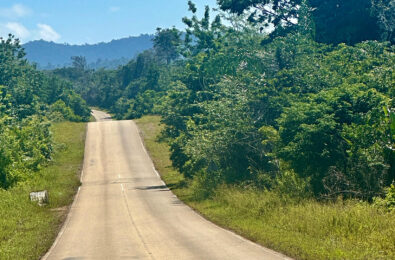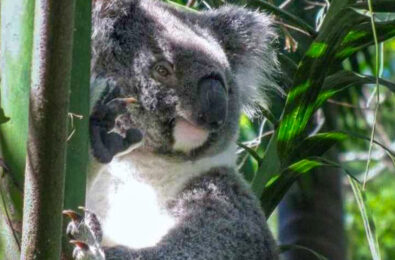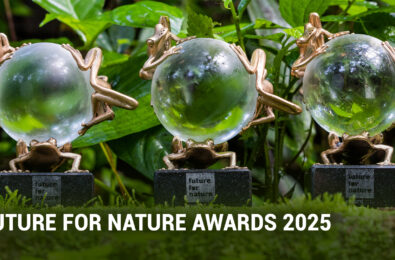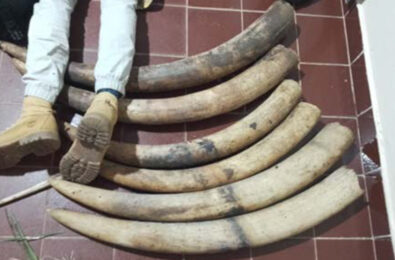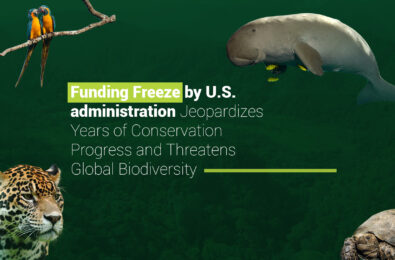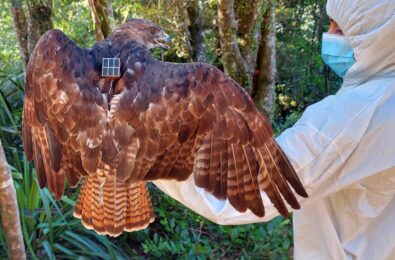Slowly but surely: studying sloths
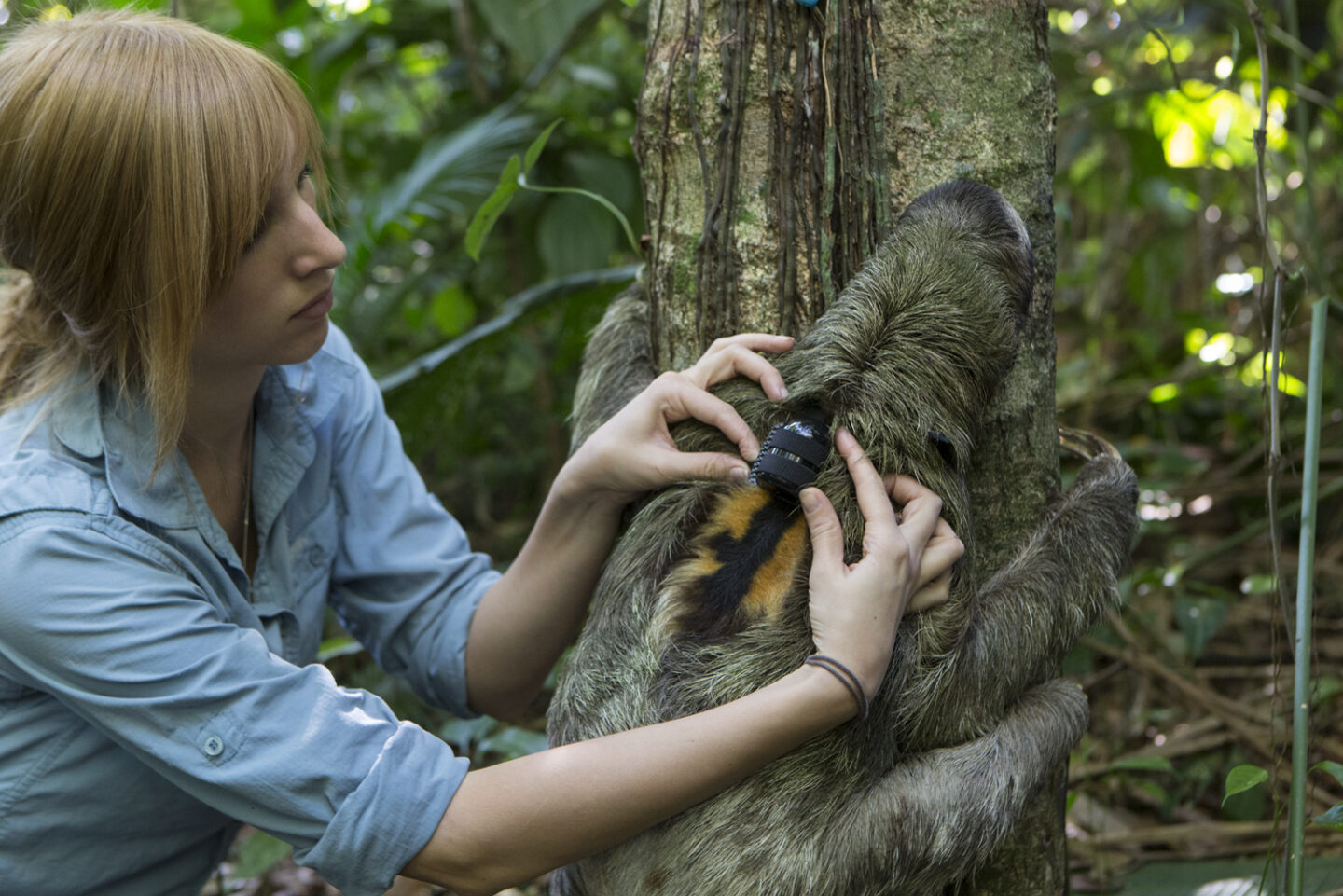
More than 14 years ago, Rebecca Cliffe (FFN winner 2022) developed the first-ever sloth backpack. With these backpacks, she was able to track wild sloths and study their behaviour. After years of patience and dedication, Rebecca recently published a scientific paper about the results! Read about the study here.
Considering the effects of climate change and human activities on tropical ecosystems, do sloths adapt to their surroundings and cope with changes in their environment? As humans are increasingly impacting the natural world, Rebecca wanted to find out how this is affecting wild sloths in Costa Rica. So she focussed on understanding how two types of sloths, the brown-throated sloth and the Hoffmann’s two-toed sloth, behave in their shared habitat.
Sloths are elusive animals, making it difficult to observe their behaviour for long periods. To overcome this challenge, Rebecca developed the sloth backpacks to continuously monitor the behaviour of two sloth species over several days to weeks. She attached micro data loggers to 9 wild sloths and continuously recorded their behaviour for up to 10 days at a time. Technology has improved immensely since the start of the study, as it’s now possible to get over 2 months of data, but “back then 10 days was a massive win”, Rebecca mentioned.
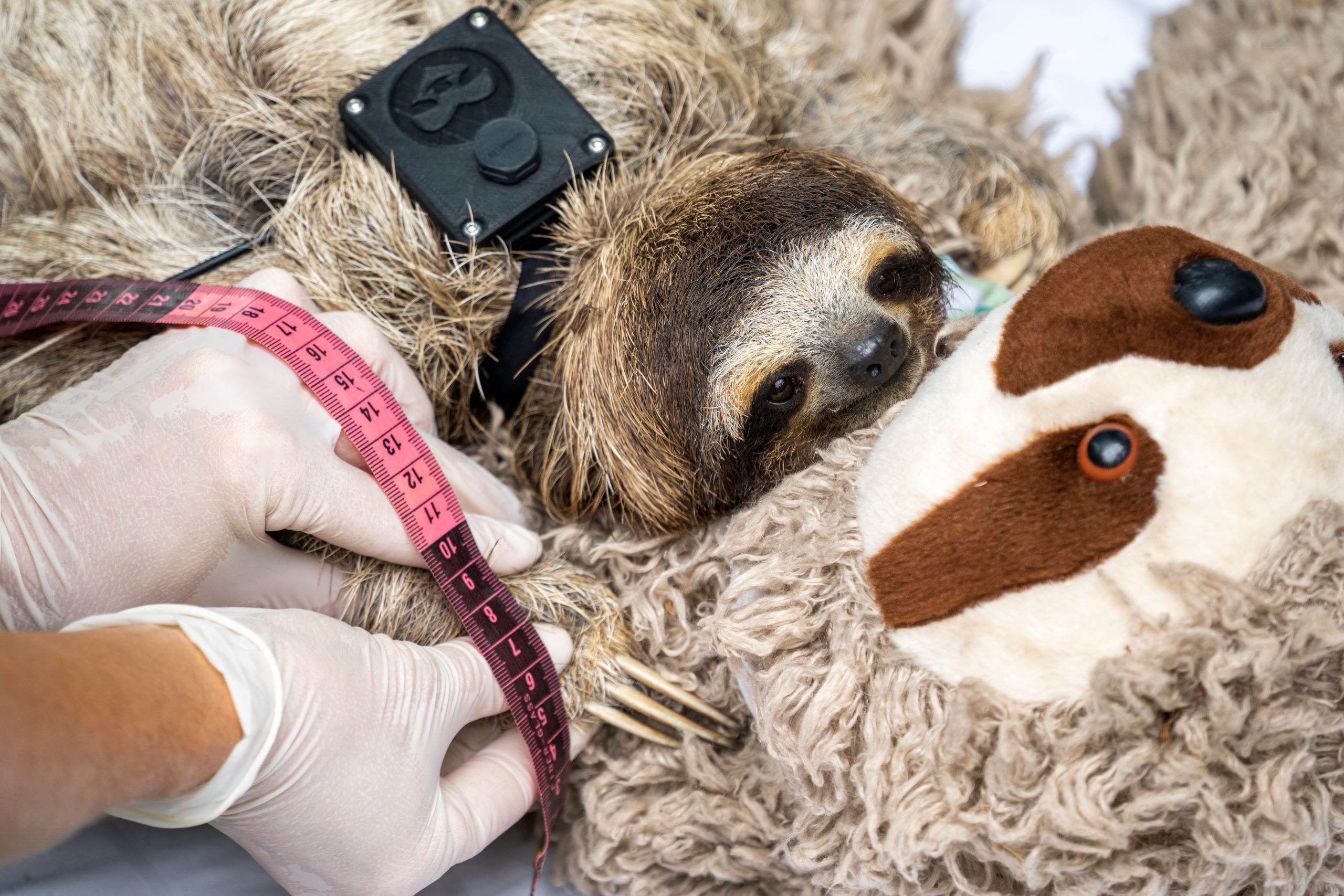
Mango the sloth, with her tracking backpack, getting a check-up, credits Mira Meijer
With the trackers, Rebecca was able to track the sloths’ locations and see what trees they were using. She also monitored the environmental conditions, such as temperature and rainfall. The results show that both sloth species were active at different times throughout the day and night, meaning they didn’t follow a strict schedule. Interestingly, there was a lot of variation in activity levels among individual sloths and even within the same sloth over time. This suggests that sloths have some flexibility in their behaviour.
The study also looked at how environmental conditions affect sloth activity. Surprisingly, the daily temperature didn’t have a direct impact on their activity levels. However, brown-throated sloths were more active at night on colder nights and the nights following colder days. This suggests that temperature changes might influence when they’re most active.
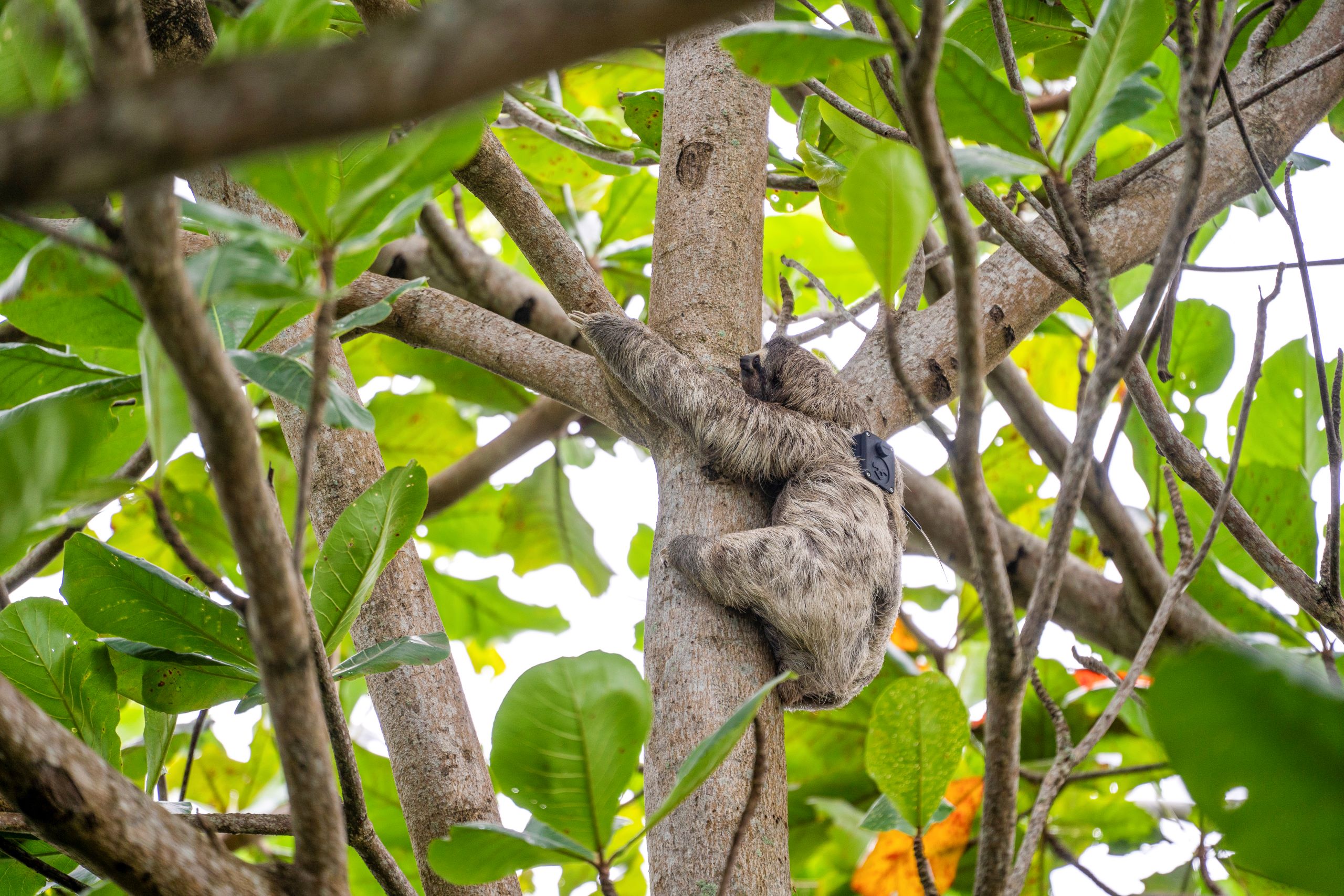
A wild sloth carrying a tracker backpack, credits Mira Meijer
Overall, the research showed that sloths in the same population have different activity patterns. Rebecca thinks this variability allows sloths to take advantage of favourable conditions while minimizing the risk of being attacked by predators. “I was surprised to see how much variation there was in sloth activity levels – both within and between individuals. I think that this asynchrony may serve as an effective predator avoidance strategy. Sloths are increasing their chances of survival by increasing their unpredictability”
Understanding how sloths behave in response to their environment is important for protecting them, especially as tropical ecosystems face challenges from climate change and human activities. By learning more about sloths’ behaviour, Rebecca contributes to efforts aimed at conserving these amazing creatures and their habitats. Great work!








